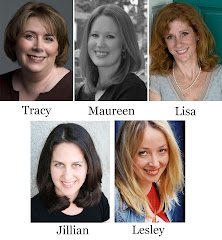"Good heavens. She's done it again."
"Hnh?"
"That Livingston creature. She's posting all pell-mell and willy-nilly on the wrong day again."
"Unh."
"Well. You sound as if you just don't care--"
"Busy here."
"Oh. Oh yes. Quite right. It's only that there are proper procedures you know--"
"Hand me those."
"Right-o... Awfully dark in here, what?"
"That's 'cause yer in my light."
"Ah! Yes. Sorry. Better?"
"Dandy."
"Look--are you absolutely certain you're supposed to cut that one first?"
"What?"
"Just that I would've thought red before green."
"Okay. That's it."
"What? Where are you going? I can't do this alone!"
"Shoulda thought of that before you opened yer big yap."
"Oh. Oh my..."
Ah dialogue. I just LOVE dialogue. I get a huge kick out of sitting back and letting the characters do all the work for once. The thing about conversations in a story is not just that they can tell you things about whatever subject is under discussion--but they can also say so much about who's doing the talking, where they are, what's going on around them, and why on earth you should care.
With absolutely no description, no dialogue attribution or speech 'tags', no narrative intrusion whatsoever, in fact, you should be able to glean an awful lot from a simple conversation. The above exchange, for example. Sure it was a bit slap-dash on my part, a bit "willy-nilly". But if I've done an even half-way decent job ot it, you should be able to tell a few things about the participants. What they're doing, maybe. A sense of the surroundings (just a hint, here, really), perhaps an inkling of their relationship and differeing personality traits, maybe even a few clues as to ethnic identities and age difference. Another thing? Conversations can be pretty useful in moving the plot along.
I start scenes like this all the time when I'm writing. I just let my guys and girls "open their big yaps" and I take it all down like a court stenographer. The conversation becomes the bones of the scene. Then I can go back and flesh it out to varying degress. You know--add a few beads of sweat on an upper lip here, the sounds of ticking there, a rough edge or querulous warble to a voice, stuff like that.
Sometimes, your skeleton will need extra meat on its bones before you send it walking around. And sometimes, it'll just need a little bit of muscle and skin. But once you've got dialogue down, you've at least got something to hang the juicy bits on. And maybe someone who can diffuse that bomb. (Or not!)
Now go. Try it. Eavesdrop on your creations. Just remember to cover your ears when the little red numbers read 0.00!
Subscribe to:
Post Comments (Atom)


6 comments:
A court stenographer. That's it!! That's exactly what I was trying to say. Great post!
Thanks, Lisa!
Now if only I had one of those funky steno machines...
That's exactly what I'm doing in revisions right now--adding meat to the skeleton!
Interesting that you start scenes with dialogue, just to see where they go. I might have to try that!
I'm obsessed with dialogue. It's my favorite part of writing a novel. Great post!
Dialogue is much easier to read than long descriptions, and can reveal information without making it seem like exposition.
Post a Comment